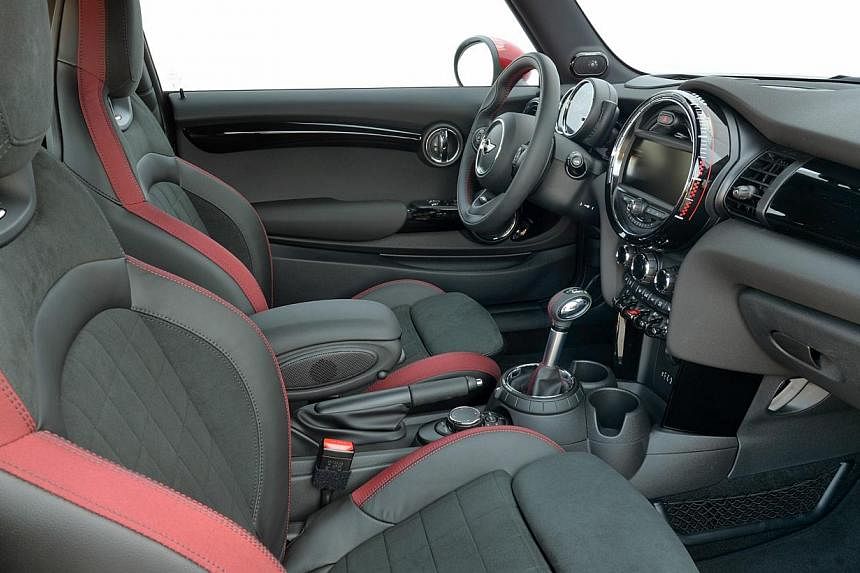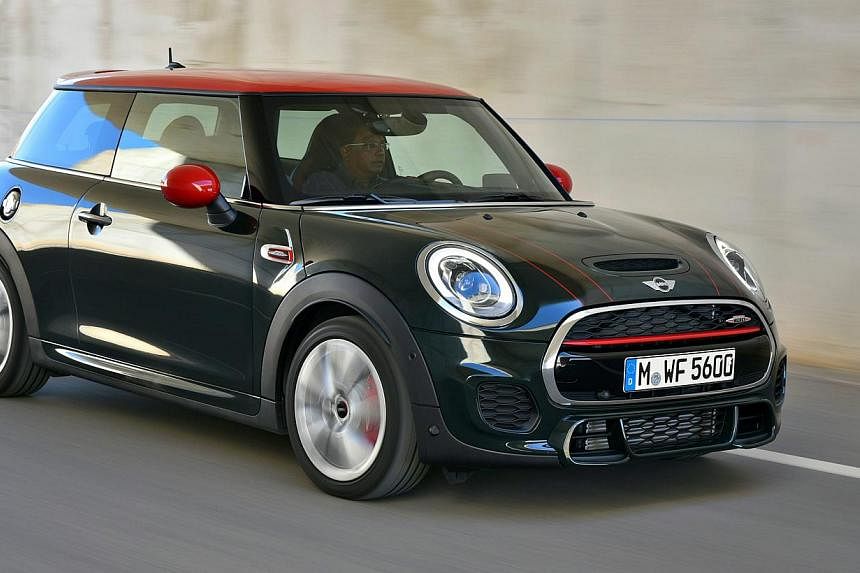The history of the classic Mini is fascinating.
Originally designed as a tiny two-door passenger car for the masses, it was nonetheless technically far superior to most cars of its era. It had an 848cc engine, placed transversely in front and driving the front wheels through a four-speed gearbox that shared its oil with the engine. Rubber cones were used as springs and the wheel diameter was just 25cm.
Around the time of the Mini's introduction in 1959, the most successful Formula One car was the Cooper, built by John Newton Cooper. When Mr Cooper saw and drove the Mini, he thought the little car with its low centre of gravity, sharp handling and compact dimensions had the potential to win races. Thus, the Mini Cooper was born. The rest, as they say, is glorious history.
Throughout the 1960s and 1970s, Mini Coopers were winning rallies and races all over the world. In Singapore, it was a hot favourite with every motoring enthusiast who wanted to modify his car. Minis were inexpensive and reliable, even after extensive modifications with bolt-on kits. For instance, a stock 1,275cc four-cylinder Cooper S with two carburettors boasted 76bhp and 107Nm.
Today's Mini is a BMW Group product manufactured in Oxford, England. Current Cooper and Cooper S versions of the Mini continue to deliver the spirit of the originals. That means a small car with huge capabilities.
The top performer of the Mini range is the newly introduced John Cooper Works model - JCW for short. The engine is a 2-litre four-cylinder with direct fuel injection, a turbocharger integrated with the exhaust manifold and Valvetronic plus Vanos camshaft control.
The nett result is 231bhp of horsepower and a whopping 320Nm of torque. This new JCW is the most powerful Mini yet.
Anyone who has driven a Cooper S of the 1960s will appreciate what BMW has done with the JCW. Okay, so it is not as tiny as it used to be, but the driving experience is very much the modern equivalent.
The sharp steering, lightning-quick throttle response and kart-like handling are fabulously reminiscent of the 1960s classic. But the 21st-century version of the fastest Mini also comes with a level of refinement, ride comfort and build quality that no 1960s crystal ball could have predicted.
A six-speed manual is the standard transmission, but I did most of the driving in a JCW with six-speed automatic gearbox. Before you raise your eyebrows, remember that this is a JCW and the auto unit will be the default transmission you will get in Singapore. The good news is that the automatic takes nothing from the car's eager and zippy character.
Whether leaving it in D or using the paddle-shifters, the transmission works with enthusiasm and encourages sporty driving. According to the official performance figures, the Mini JCW sprints to 100kmh in 6.1 seconds with the autobox - 0.2 of a second faster than the manual. Interestingly, the automatic JCW also boasts better fuel economy, despite weighing 15kg more.
The JCW's Cooper S-based suspension gets some useful tweaks and Brembo brakes. Dynamic Stability Control (DSC) and Dynamic Traction Control (DTC) are standard features, as is the differential lock courtesy of electronic brake control.
On the road, I do not feel any of the electronics coming into play. The car simply feels like a finely engineered driving machine - beautifully balanced, with barely a hint of understeer, and keen to change direction on command of the steering wheel.
I can feel the rear end get a little light when braking into a corner, but I quickly learn that it is just a cheeky and harmless characteristic.
I did a few laps on the race circuit with a six-speed manual JCW, chasing former Mini rally ace Rauno Aaltonen. It is a pleasant surprise to discover that the car is just as capable on the track as it is on the road. The Brembo brakes handle the track-work abuse without any issue.
The front-end styling of the current Cooper S has been the subject of some criticism and the JCW is unlikely to see the end to this. There are bigger air- intakes in the bumper and two new grilles that take the place of the fog lamps. The objectives are more cooling air, better induction and optimised aerodynamics - not beautification of the face.
LED headlamps and daytime running lights are standard features that complete the JCW front. A roof-mounted spoiler on the top of the tailgate is claimed to increase downforce, but Mini has not given a specific percentage.
Inside, the JCW has a pair of sports seats in front, which are good to look at and are very comfortable. Much of the cabin is pretty much Cooper S, which means it is stylish and well put-together. A head-up display is optional, as is a sports instrument pack that adds three round dials (for oil and boost pressures, and a chronometer).
This latest Mini is not inexpensive nor is it an easy machine for DIY enthusiasts to modify. These days, tuning means knowing how to configure the ECU (engine control unit). But for sheer driving pleasure, the standard-spec Mini JCW shines as a fast and capable road car that can also offer tremendous fun on a racing circuit.
The 2015 Mini John Cooper Works might be the perfect pocket rocket for the enthusiast who loves to enjoy a fun weekend at the track and then drive to work on Monday.
The writer is a regular contributor to Torque, a motoring monthly published by SPH Magazines.


